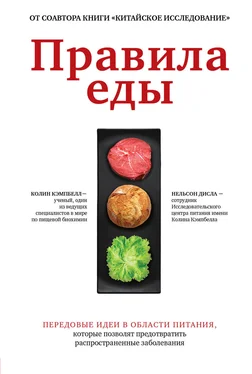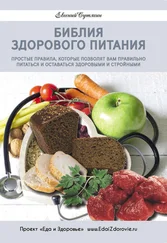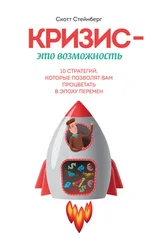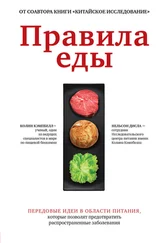12 US Food and Drug Administration. Dietary supplement health and education act of 1994, http://vm.cfsan.fda.gov/~dms/dietsupp.html (1995) (site discontinued).
13 Respondent’s findings of fact, conclusions of law, argument and proposed order. Before Federal Trade Commission, Washington, DC. Docket No. 9175, 214 (New York: Bass & Ullman, 1985).
14 Omenn, G. S., Goodman, G. E., Thornquist, M. D., Balmes, J., Cullen, M. R., Glass, A. et al. Risk factors for lung cancer and for intervention effects in CARET, the Beta-Carotene and Retinol Efficacy Trial. J. Natl. Cancer Inst. 88, 1550–1559 (1996).
15 Kelloff, G. J., Crowell, J. A., Hawk, E. T., Steele, V. E., Lubet, R. A., Boone, C. W. et al. Strategy and planning for chemopreventive drug development: clinical development plans II. J. Cell. Biochem. 26S, 54–315 (1996).
16 US Preventive Services Task Force. Routine vitamin supplementation to prevent cancer and cardiovascular disease: recommendations and rationale. Ann. Internal Med. 139, 51–55 (2003).
17 Omenn, G. S., Goodman, G. E., Thornquist, M. D., Balmes, J., Cullen, M. R., Glass, A. et al.Effects of a combination of beta carotene and vitamin A on lung cancer and cardiovascular disease. New Engl. J. Med. 334, 1150–1155 (1996).
18 Peto, R., Doll, R., & Buckley, J. D. Can dietary beta-carotene materially reduce human cancer rates? Nature 290, 201–208 (1981).
19 Shekelle, R. B. & Raynor, W. J., Jr. Dietary vitamin A and risk of cancer in the Western Electric Study. Lancet 2, 1185–1190 (1981).
20 Morris, C. D. & Carson, S. Routine vitamin supplementation to prevent cardiovascular disease: a summary of the evidence for the U.S. Preventive Services Task Force. Ann. Internal Med. 139, 56–70 (2003).
21 Goodman, B. Experts: don’t waste your money on multivitamins. WebMD Health Newsletter (2013). https://www.webmd.com/vitamins-and supplements/news/20131216/experts-dont-waste-your-money-on-multivitamins#1.
22 ScienceDaily. Most popular vitamin and mineral supplements provide no health benefit, study finds. Science News (2018). https://www.sciencedaily.com/releases/2018/05/180528171511.htm.
23 IBISWorld. Vitamin & Supplement Manufacturing – US Market Research Report. (2018). https://www.ibisworld.com/industry-trends/market-research– reports/manufacturing/chemical/vitamin-supplement-manufacturing.html.
24 Grand View Research. Dietary supplements market size worth $278.02 billion by 2024. (2018). https://www.grandviewresearch.com/industry-analysis/dietary-supplements-market.
25 United States Department of Health and Human Services. The Surgeon General’s Report on Nutrition and Health. (Superintendent of Documents, US Government Printing Office, 1988).
26 National Research Council & Committee on Diet and Health. Diet and health: implications for reducing chronic disease risk. (National Academies Press, 1989).
27 American Institute for Cancer Research and World Cancer Research Fund. Food, nutrition and the prevention of cancer: a global perspective (Authors, 1997).
Глава 9
1 Carroll, K. K., Braden, L. M., Bell, J. A., & Kalamegham, R. Fat and cancer. Cancer 58, 1818–1825 (1986).
2 National Research Council & Committee on Diet and Health. Diet and health: implications for reducing chronic disease risk (National Academies Press, 1989).
3 Campbell, T. C. A plant based diet and animal protein: questioning dietary fat and considering animal protein as the main cause of heart disease. J. Geriatric Cardiol. 14, 331–337 (2017).
4 Armstrong, D. & Doll, R. Environmental factors and cancer incidence and mortality in different countries, with special reference to dietary practices. Int. J. Cancer 15, 617–631 (1975).
5 Newburgh, L. H. & Clarkson, S. The production of arteriosclerosis in rabbits by feeding diets rich in meat. Arch. Intern. Med. 31, 653–676 (1923).
6 Ganmaa, D. & Sato, A. The possible role of female sex hormones in milk from pregnant cows in the development of breast, ovarian and corpus uteri cancers. Med. Hypotheses 65, 1028–1037, doi:10.1016/j.mehy.2005.06.026 (2005).
7 Connor, W. E. & Connor, S. L. The key role of nutritional factors in the prevention of coronary heart disease. Prev. Med. 1, 49–83 (1972).
8 Jolliffe, N. & Archer, M. Statistical associations between international coronary heart disease death rates and certain environmental factors. J. Chronic Dis. 9, 636–652 (1959).
9 Campbell, T. M. I. & Campbell, T. C. The breadth of evidence favoring a whole-foods, plant-based diet. Part II, malignancy and inflammatory diseases. Primary Care Reports 18, 25–35 (2012).
10 World Cancer Research Fund/American Institute for Cancer Research. Food, nutrition, physical activity, and prevention of cancer: a global perspective. (American Institute for Cancer Research, 2007), 517.
11 Hildenbrand, G. L. G., Hildenbrand, L. C., Bradford, K., & Cavin, S. W. Five-year survival rates of melanoma patients treated by diet therapy after the manner of Gerson: a retrospective review. Alternative Therapies in Health and Medicine 1, 29–37 (1995).
12 Morrison, L. M. Arteriosclerosis. JAMA 145, 1232–1236 (1951).
13 Morrison, L. M. Diet in coronary atherosclerosis. JAMA 173, 884–888 (1960).
14 Steinberg, D. Thematic review series: the pathogenesis of atherosclerosis: an interpretive history of the cholesterol controversy, part III: mechanistically defining the role of hyperlipidemia. J. Lipid Res. 46, 2037–2051, doi:10.1194/jlr.R500010-JLR200 (2005).
15 Ornish, D., Brown, S. E., Scherwitz, L. W., Billings, J. H., Armstrong, W. T., Ports, T. A. et al. Can lifestyle changes reverse coronary heart disease? Lancet 336, 129–133 (1990).
16 Esselstyn, C. B., Jr. Updating a 12-year experience with arrest and reversal therapy for coronary heart disease (an overdue requiem for palliative cardiology). Am. J. Cardiol. 84, 339–341 (1999).
17 Esselstyn, C. B., Ellis, S. G., Medendorp, S. V., & Crowe, T. D. A strategy to arrest and reverse coronary artery disease: a 5-year longitudinal study of a single physician’s practice. J. Family Practice 41, 560–568 (1995).
18 Esselstyn, C. B. J., Gendy, G., Doyle, J., Golubic, M., & Roizen, M. F. A way to reverse CAD? J. Fam. Pract. 63, 356–364b (2014).
19 Campbell, T. C. Present day knowledge on aflatoxin. Philadelphia Journal of Nutrition 20, 193–201 (1967).
2 °Campbell, T. C., Caedo, J. P., Jr., Bulatao-Jayme, J., Salamat, L., & Engel, R. W. Aflatoxin M1 in human urine. Nature 227, 403–404 (1970).
21 Lancaster, M. C., Jenkins, F. P., & Philp, J. M. Toxicity associated with certain samples of groundnuts. Nature 192, 1095–1096 (1961).
22 Wogan, G. N., in Methods in cancer research, Vol. 7 (ed. H. Busch), 309–344 (Academic Press,1973).
23 Madhavan, T. V. & Gopalan, C. The effect of dietary protein on carcinogenesis of aflatoxin. Arch. Path. 85, 133–137 (1968).
24 Schulsinger, D. A., Root, M. M., & Campbell, T. C. Effect of dietary protein quality on development of aflatoxin B1-induced hepatic preneoplastic lesions. J. Natl. Cancer Inst. 81, 1241–1245 (1989).
25 Youngman, L. D. & Campbell, T. C. Inhibition of aflatoxin B1-induced gamma-glutamyl transpeptidase positive (GGT+) hepatic preneoplastic foci and tumors by low protein diets: evidence that altered GGT+ foci indicate neoplastic potential. Carcinogenesis 13, 1607–1613 (1992).
26 Gurtoo, H. L. & Campbell, T. C. A kinetic approach to a study of the induction of rat liver microsomal hydroxylase after pretreatment with 3,4-benzpyrene and aflatoxin B1. Biochem. Pharmacol. 19, 1729–1735 (1970).
27 Nerurkar, L. S., Hayes, J. R., & Campbell, T. C. The reconstitution of hepatic microsomal mixed function oxidase activity with fractions derived from weanling rats fed different levels of protein. J. Nutr. 108, 678–686 (1978).
Читать дальше












